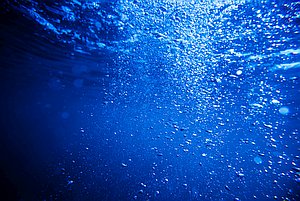Underwater avalanche builds and builds

In January 2020, a powerful underwater avalanche created a seafloor flow of sediment (called a turbidity current) off the west coast of Africa. The flow damaged telecommunications cables and continued for two days. It was the longest-running underwater avalanche yet recorded in action.
An undersea canyon at the mouth of the Congo River leads out into the Atlantic depths. Scientists had previously lined the submerged canyon with an array of sensors capable of detailed measurement of turbidity currents. For the first time, they were able to study the progress of a large flow of sediment.
Widespread underwater deposition occurred, as well as erosion of the seabed in some places. The flow travelled more than 1,100 km (700 miles) across the floor of the Atlantic Ocean, simultaneously eroding over a cubic kilometre of sediment. The flow continuously accelerated from 5.2 to 8 metres/second (12 to 18 mph) as it progressed, ending up in waters 4.7 km (3 miles) deep.
The scientists found that large sediment flows can ‘self-accelerate’ and build in power over exceptionally long distances across the ocean floor.
In the words of Professor Peter Talling, of Durham University: “This thing gradually got faster and faster. Because it erodes the seabed as it goes, it picks up sand and mud, which makes the flow denser and even quicker. So, it has this positive feedback where it can build and build and build.”
Most of the earth’s extensive sedimentary rock layers were laid down over vast distances, by much larger and more energetic turbidity currents. This latest study provides a tiny insight into how enormous underwater sediment flows during Noah’s Flood could build in speed and power as they progressed.
- Amos, J., Underwater avalanche continued for two days, bbc.com, 7 Jun 2021.


Readers’ comments
Comments are automatically closed 14 days after publication.